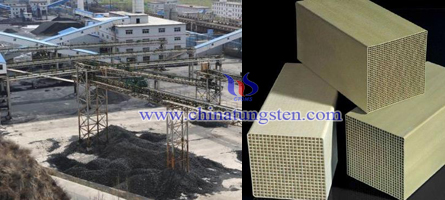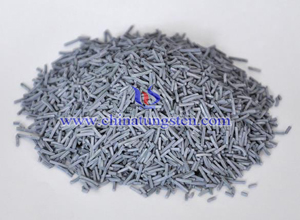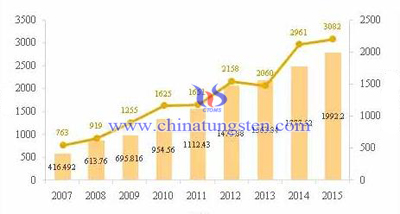Britons’ Historic Poll to Leave EU Affects Gold Market
- Details
- Category: Tungsten's News
- Published on Friday, 24 June 2016 22:11
- Written by TungstenAlloy
- Hits: 505
The result for British voters elected to leave the European Union(EU) has been announced today, which will have far-reaching repercussions both domestically and internationally, and immediately plunged the 28-member political and economic union into its worst crisis since it was founded.
The vote result was at times bitter and acrimonious. The Leave campaign, headed by former London Mayor Boris Johnson, took 51.9% of the vote to the 48.1% that the Remain campaign, headed by Prime Minister David Cameron. According to British Broadcasting Corporation, 72% of the electorate voted.
The result had an immediate effect on the financial markets, with the pound plunging to a 30-year low against the US dollar and the Euro, Europe’s single currency, slid 3% against the US currency. The US has for years had British membership of the EU a core part of its European policy, while the UK and China are experiencing what Cameron and President Xi labeled “a golden era” after the Britain last Oct., when deals worth 40 billion sterling were announced. Now the referendum result to leave the EU is affecting the gold market greatly, which will lead the gold price to a increasing tendency apparently. It is said that gold, as a favorable hedge investment, will be more and more popular by the investors, which will push the gold price moving up.
| Tungsten Supplier: Chinatungsten Online www.chinatungsten.com | Tel.: 86 592 5129696; Fax: 86 592 5129797;Email:sales@chinatungsten.com |
| Tungsten News & Prices, 3G Version: http://3g.chinatungsten.com | Molybdenum News & Molybdenum Price: http://news.molybdenum.com.cn |
Steel & Coal Industry Sewage Charge Collected Inspection, Tungsten Trioxide Denitration Catalyst Has Good Prospect
- Details
- Category: Tungsten's News
- Published on Friday, 24 June 2016 18:10
- Written by chunyan
- Hits: 612

| Tungsten Oxide Supplier: Chinatungsten Online www.tungsten-oxide.com | Tel.: 86 592 5129696; Fax: 86 592 5129797;Email:sales@chinatungsten.com |
| Tungsten News & Prices, 3G Version: http://3g.chinatungsten.com | Molybdenum News & Molybdenum Price: http://news.molybdenum.com.cn |
Desulphurization Industry Continues Expand, Tungsten Trioxide Desulfurization Catalyst Market Growing
- Details
- Category: Tungsten's News
- Published on Thursday, 23 June 2016 17:52
- Written by chunyan
- Hits: 547
 With the more stringent standards of Chinese air pollution regulations, the next 5--10 years will be the key period for Chinese air pollution control, the growth rate of market capacity will continue to maintain of around 10%. Statistics show that, in 2015 China's air pollution control industry scale was over 130 billion RMB, of which about 18.7 billion RMB belongs to desulfurization industrial, the scale of denitration industrial was about 75 billion RMB, industrial scale of dust removal was about 430 billion RMB. In 2014, the thermal power industry desulfurization market size was 168 billion RMB, building materials, chemicals, nonferrous metals, petrochemical, and other non-thermal power desulphurization industry market size was about 54 billion RMB.
With the more stringent standards of Chinese air pollution regulations, the next 5--10 years will be the key period for Chinese air pollution control, the growth rate of market capacity will continue to maintain of around 10%. Statistics show that, in 2015 China's air pollution control industry scale was over 130 billion RMB, of which about 18.7 billion RMB belongs to desulfurization industrial, the scale of denitration industrial was about 75 billion RMB, industrial scale of dust removal was about 430 billion RMB. In 2014, the thermal power industry desulfurization market size was 168 billion RMB, building materials, chemicals, nonferrous metals, petrochemical, and other non-thermal power desulphurization industry market size was about 54 billion RMB.| Tungsten Oxide Supplier: Chinatungsten Online www.tungsten-oxide.com | Tel.: 86 592 5129696; Fax: 86 592 5129797;Email:sales@chinatungsten.com |
| Tungsten News & Prices, 3G Version: http://3g.chinatungsten.com | Molybdenum News & Molybdenum Price: http://news.molybdenum.com.cn |
Tungsten Trioxide Photocatalyst Eases Groundwater and Soil Pollution
- Details
- Category: Tungsten's News
- Published on Friday, 24 June 2016 18:08
- Written by chunyan
- Hits: 602

| Tungsten Oxide Supplier: Chinatungsten Online www.tungsten-oxide.com | Tel.: 86 592 5129696; Fax: 86 592 5129797;Email:sales@chinatungsten.com |
| Tungsten News & Prices, 3G Version: http://3g.chinatungsten.com | Molybdenum News & Molybdenum Price: http://news.molybdenum.com.cn |
Tungsten Trioxide Photocatalyst Helps Village Polluted Water Treatment
- Details
- Category: Tungsten's News
- Published on Thursday, 23 June 2016 17:50
- Written by chunyan
- Hits: 612

| Tungsten Oxide Supplier: Chinatungsten Online www.tungsten-oxide.com | Tel.: 86 592 5129696; Fax: 86 592 5129797;Email:sales@chinatungsten.com |
| Tungsten News & Prices, 3G Version: http://3g.chinatungsten.com | Molybdenum News & Molybdenum Price: http://news.molybdenum.com.cn |





 sales@chinatungsten.com
sales@chinatungsten.com